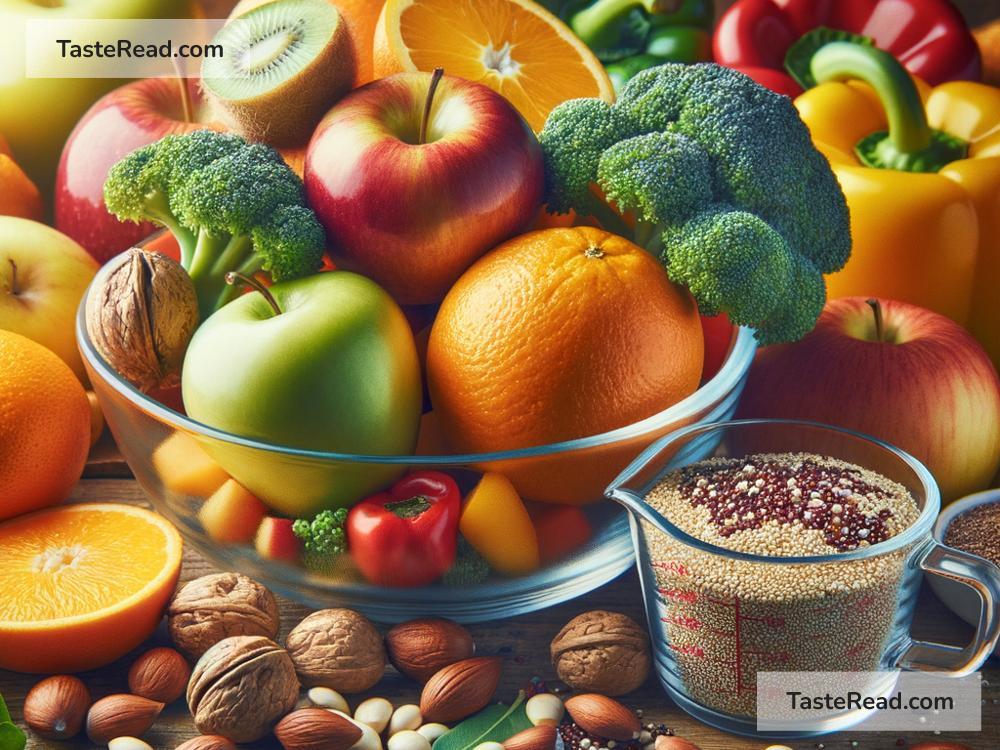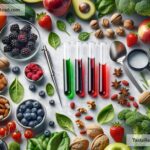The Science of Nutrient Absorption: How Your Body Turns Food Into Energy
Have you ever wondered how the food you eat gives your body the energy and nutrients it needs to work properly? The secret lies in a fascinating process called nutrient absorption. It happens in your digestive system and involves breaking down food into tiny pieces your body can use. This process is important for staying healthy, and understanding how it works can help you make smarter choices about what you eat.
In this blog, we’ll explore the science of nutrient absorption in simple terms. Let’s dive into how your body converts food into fuel!
Step 1: The Journey Begins – Digestion in the Mouth
The process of nutrient absorption starts the moment you take your first bite of food. Chewing breaks the food into smaller pieces, making it easier for your body to handle. In your mouth, saliva adds enzymes (special chemicals) that begin breaking down carbohydrates, such as those found in bread and fruits. This is the first step in digestion and sets the stage for nutrient absorption.
Step 2: The Stomach’s Job – Breaking Food Down Further
Once you swallow your food, it travels down a tube called the esophagus to your stomach. Your stomach acts like a powerful blender. It mixes the food with stomach acid and enzymes that break down proteins into smaller pieces. For example, proteins in meat, beans, or eggs are broken into smaller units called amino acids.
Your stomach also turns the food into a liquid-like substance called chyme, which makes it easier for your intestines to absorb the nutrients later on.
Step 3: The Small Intestine – The Nutrient Absorption Superstar
The small intestine is the hero of nutrient absorption. This long, coiled tube is where most of the magic happens. Chyme from your stomach enters the small intestine, and here your body works hard to extract vitamins, minerals, amino acids, fats, and carbohydrates that you need for energy and repairing tissues.
Here’s how it works:
– The walls of your small intestine are lined with tiny, finger-like structures called villi and even tinier structures called microvilli. These increase the surface area of your intestine, making it easier to absorb nutrients.
– Enzymes and digestive juices from your pancreas and liver (especially bile) help break down fats, proteins, and carbohydrates into their simplest forms, like glucose (sugar), fatty acids, and amino acids.
– Nutrients pass through the walls of the small intestine into your bloodstream. Your blood then carries these nutrients to every cell in your body, so they can be used for energy, growth, and repair.
Step 4: What Happens to What’s Left – The Large Intestine
After the small intestine absorbs all the nutrients it can, the leftover food moves to the large intestine. Here, water and salts are absorbed to keep you hydrated. Helpful bacteria in the large intestine (also known as your gut microbiome) break down parts of the food your body couldn’t digest, like fiber.
These bacteria produce certain vitamins, like vitamin K, and keep your gut healthy. The waste that remains is eventually expelled from your body.
What Nutrients Does Your Body Absorb?
Your body absorbs several key nutrients from food, and all of them play important roles:
1. Carbohydrates – These are broken down into glucose, which provides energy for your brain and muscles.
2. Proteins – These are broken into amino acids, which help repair and build tissues like muscles and skin.
3. Fats – These are broken into fatty acids and are used for energy, insulation, and supporting cell health.
4. Vitamins – These are absorbed in small amounts and help your body stay healthy. For example, vitamin C supports your immune system, while vitamin D helps your bones stay strong.
5. Minerals – Essential minerals like calcium, potassium, and iron are absorbed and support bone health, oxygen transport, and muscle function.
6. Water – Water is absorbed throughout the digestive process, keeping you hydrated and helping your body work efficiently.
Factors That Affect Nutrient Absorption
Not everyone absorbs nutrients in the same way, and several factors can impact how well your body breaks down and uses food:
1. Diet: Eating a balanced diet with a mix of nutrients (carbs, fats, proteins, vitamins, and minerals) is essential for proper absorption.
2. Gut Health: A healthy gut microbiome helps digestion and absorption, while problems like inflammation or certain diseases can make absorption harder.
3. Age: As people age, their ability to absorb nutrients can decrease, especially calcium and vitamin B12.
4. Medications: Some medicines can interfere with nutrient absorption.
5. Cooking Methods: How you cook food matters—for example, overcooking vegetables can destroy some nutrients like vitamin C.
Tips for Better Nutrient Absorption
Want to make sure your body is absorbing nutrients properly? Follow these tips:
– Eat a variety of foods, including fruits, vegetables, lean proteins, whole grains, and healthy fats.
– Include foods rich in fiber, like beans and whole grains, to support gut health.
– Stay hydrated by drinking plenty of water throughout the day.
– Pair certain nutrients for better absorption. For example, eat vitamin C-rich foods (like oranges) with iron-rich foods (like spinach) to improve iron absorption.
– Avoid excessive alcohol and smoking, which can harm the digestive system.
Conclusion
Nutrient absorption is an amazing and complex process that your body performs every day to keep you alive and healthy. It starts with digestion and continues as your intestines absorb the vitamins, minerals, proteins, fats, and carbohydrates your body needs. By eating a balanced diet, staying hydrated, and taking care of your gut health, you can ensure your body gets the most out of the food you eat.
When you understand the science behind nutrient absorption, you realize how incredible your body is—and how important it is to fuel it with the right foods. So next time you sit down for a meal, remember the journey your food is about to take and appreciate all the work your body does to keep you going!


